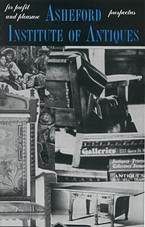|
Don't Throw Shade On That 70s Dorm Room Décor Just Yet 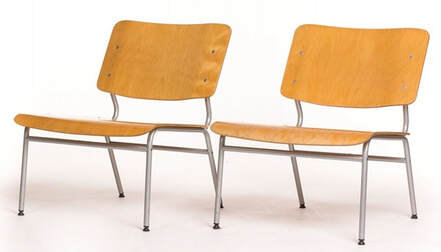 1970s Plywood & Metal Lounge Chairs 1970s Plywood & Metal Lounge Chairs New York - For years, either fairly or unfairly, Ikea has been the butt of many a jokes from those in the world of the decorative arts - especially from those in the antique and vintage business. Comments ranging from flat-pack junk to disposable-décor have been common motifs promoted by dealers and collectors alike, often in an attempt to differentiate their own seemingly 'professionally-curated' vintage inventory from that of the Swedish conglomerates catalog of mass produced items. However, in some respects the distaste for the highly profitable Nordic retailer has gone beyond just general dislike, and has instead crossed over into a special kind of disdain that other corporate furniture retailers have often been spared from. While many would argue that giants like Ashely Home Store Furniture, Crate & Barrel, Pottery Barn, and even the faltering Pier 1 Imports have all been subject to some form of ridicule over the years, it hasn't gone unnoticed that there appears to be a particularly strong and directed feeling of condescension from decorative arts enthusiasts when it comes to Ikea's standing in the world of home décor. 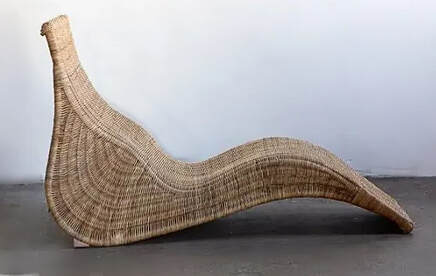 Ikea Chaise Lounge Chair. 3K to 4K At Auction Ikea Chaise Lounge Chair. 3K to 4K At Auction For many though, including Jeffery Blumefeld, a vintage enthusiast, who owns and represents a group of resale shops throughout New Jersey, this is not only an outdated notion, but one that's well past its prime. "We've been selling vintage 80s Ikea for about fifteen years now," says Blumefeld. "We started off with just a few items like some of their early Skojig Mushroom and Fackla lamps, but recently it's exploded across all design facets, including furniture and outdoor items like wicker chaise lounges, some of which we're now selling for well into the thousands," he says. According to Blumefeld, sales have been so strong is this area that he recently converted one of his stores almost entirely into what he refers to as a 'retro-Ikea' space. "We got in on it early, and that helped" he says, "but if you look at a lot of the Ikea stuff from the 80's and 90s, it's held up surprisingly well over the years." Blumefled believes that solid construction techniques and designs, along with nostalgic buyers from the era are likely responsible for creating the surging market, and while he acknowledges that there's always been collectors out there for Ikea goods (it even has its own museum), he's not really sure yet about its long-term viability "I can't really say if the trend is going to go beyond the hard-core clients to a broader buying base, but if price is any indicator of growing popularity, then there's likely some good growth potential to come." 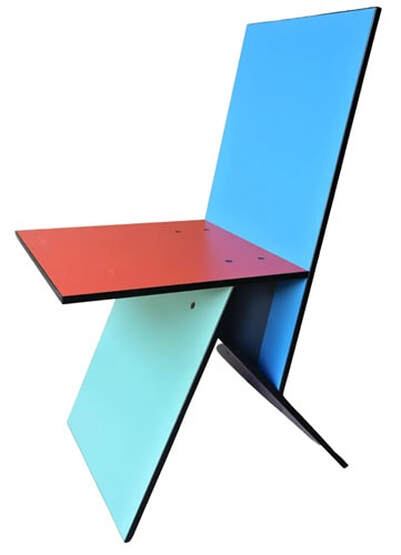 Collectible Vilbert Chairs Collectible Vilbert Chairs Charles Hanley, who works as a decorative arts aggregator for completed auction sales, says that what's funny about the whole 'upturned-nose' towards Ikea pieces from the late twentieth century, is that most people don't realize just how big of an effect the company had on some of the major design trends from that time. While humble in origin, Hanley says products like the Billy & Tema Bookshelves from the 1950s, designed by Ikea company-man Gillis Lundgren, were standout items that had a lasting effect years later on pieces created in the 1970s. In addition to this, Hanley says that Ikea was also responsible for hiring some of the top designers towards the end of the century, including the famous Danish artist and designer Verner Panton, whose iconic Vilbert chairs that sold poorly in the 90's for less than a hundred dollars a piece, but which are now considered collectors items, easily bringing in over $3,000 a pair at auction. Going to sites such as Barnebys.com shows just how much prices have climbed recently says Hanley. "There are 70s-era Amiralen armchairs selling for well over a $1,000 each," he notes, "and some early examples of the Billy & Tema Bookshelves hammering-out for upwards of four-grand - that's starting to rival some Mid-Century prices," he says. Beyond that, Hanley thinks that the junky flat-pack moniker is simply undeserved. "Ikea created well designed furniture at an affordable price," he says, "it's just that you had to put the pieces together yourself." 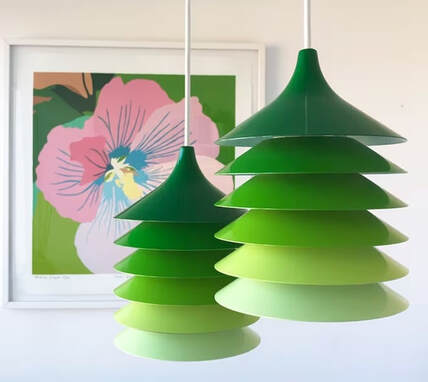 1970s Duett Hanging Lamps $300 1970s Duett Hanging Lamps $300 For those dealers who managed to get ahead of the curve and bought stock and inventory early, the rewards have been plentiful. Alison Hardy, who curates most of her Ikea pieces on 1stDibs, says that knowing what to buy has been key to her success. "Not all Ikea pieces are collectible," says Hardy. "You have to do your research and sometimes it's just a gut feeling that you're buying something that will accrue in popularity and value a little later on down the road." Hardy cites her recent sale of Vilbert chairs which she bought years ago for less then they retailed new. "They just weren't that popular back then," she says, "but over time I suspected they might become a bit of a classic." Hardy says she literally stumbled across six at a garage sale and bought them on sight to go with her dinning table. "They just looked cool in my apartment," she said, "and I've always bought what I liked rather than what was popular at the time." Today, Hardy says her sales of Ikea items range from Duett hanging lights and glassware to funky seating pieces like 70s Skopa lounge chairs, which can bring in bids in excess of $1,000. "I really liked a lot of the design elements that Ikea brought to the market when compared to most other manufacturers from that time," she says, "it was just something different and new that most people hadn't seen before." 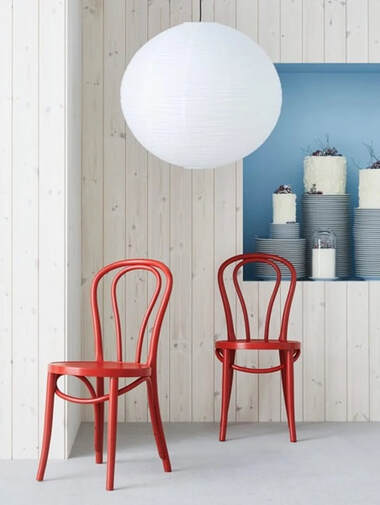 Gratulera - Vintage Ikea Re-Issues Gratulera - Vintage Ikea Re-Issues While design choices are obviously subjective, it would appear that Hardy isn't alone in her 'like of Ikea,' at least according to the editorial director of 1stDibs marketplace, Anthony Barzilay Freund, who was quoted as saying in an interview with the Financial Times that, "Over the last three years prices for Ikea collectibles had increased by more than fifty-percent." Brazilay went on to add that the average listing price of vintage Ikea seating models is now above $3,000. While it's clear that Ikea, and its clearly Scandinavian design may not be fan favorites with absolutely everyone, there can also be no denying its long-term appeal to a broad range of people. Aside from it's purely aesthetic qualities, there's also a certain degree of nostalgia involved when considering it's recent rise in popularity amongst those of a particular age and collecting group. People who grew up in the 1980s have now reached that disposable income stage, and can decorate their homes with items that remind them of their youth. In fact, the growing nostalgia and popularity for all things Ikea has also not gone unnoticed by the company itself. In recent years, they have reintroduced a few classic pieces from the 70s, such as the Gratulera collection (items from the 50s and 60s), as a celebration of the company's heritage. This move has further fueled interest in vintage Ikea pieces, with many looking to add some of the 'reissued' retro flair to their collections. However, it's not just the designs themselves that make Ikea pieces collectible, but also the stories behind them. The fact that Ikea pioneered a new approach to furniture production makes the company and its furniture designs historically significant and relevant. Marketplace enthusiasts appreciate this kind of context - especially when these pieces can tell a story to not only collectors and dealers, but to their customers as well. - AIA Staff Writers  NOTE: For readers seeking more information about the Asheford Institute Of Antiques distance-learning program on professional-level appraising, the study of antiques, collectibles, vintage and mid-century modern items, please click here to visit the school's Home Page. Should you have additional questions about the Asheford program, you can also write to the school at: [email protected] or call the Registrar's Office toll-free at: 1-877-444-4508. |
AIA StaffWe're providing our students and reader's with the latest breaking news on events and happenings that we think might be of interest to both collectors and dealers alike. Including changes within the world of antiques, vintage, collectibles and appraising that might just have an effect on your bottom line. We're also interested in hearing from you - so if you've got a great newsworthy story, let us know, and you just might find it here! Archives
July 2024
CategoriesLegal Disclaimer: Extraneous opinions, statements and comments made by individuals represented within these posts do not necessarily reflect those of the Institute. The publication naming of specific business entities, organizations, and concerns, contained herein, in no way represents an endorsement or recommendation of services or products by the Institute. Publicly identifiable information contained herein (including, but not limited to contact information), has been intentionally limited where possible, due to privacy and legal concerns related to the digital dissemination of information through online means. All views expressed herein are those of their respective owners. The Institute is in no way responsible, financially or otherwise, for the accuracy or validity of statements contained within published posts from sources that originate and appear outside of the written and expressed views of those submitted by the Institute.
|



 RSS Feed
RSS Feed
